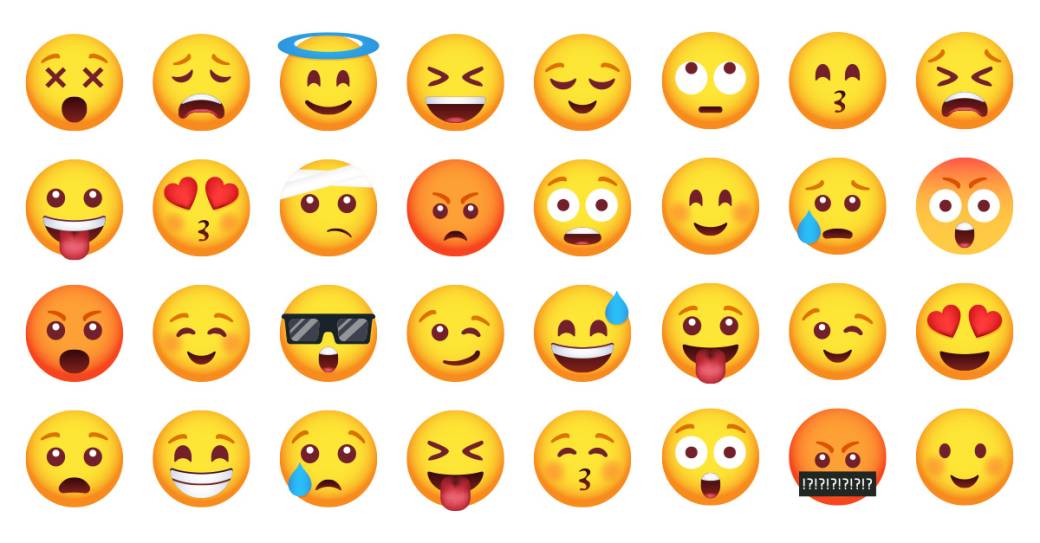Sexism, racism, genderism, ageism? There's been an emoji for everything
27 April, 2018 Reading: 4:12 mins
Love them or hate them, emojis have truly become part of the lexicon of our mobile language. They allow us to keep our messages short and simple – sometimes occupying the entire message – while at the same time constantly letting our recipients quickly know how we feel as we rattle our way through our text messages. They’re all over social media and you’ll frequently find them in both B2C and B2C marketing content – frankly, there’s no escaping the ubiquitous emoji!

The first icons to bear the name ‘emoji’ originated in 1999, when Shigetaka Kurita, a designer inspired by the Manga cult comic style, was tasked with revolutionising Japan’s i-communications. He was working with NTT DOCOMO's i-mode department where he created 180, 12 x 12 pixel pictogram-like characters, initially to communicate emotions like joy, sadness, indifference and astonishment. The word ‘emoji’ is Japanese and comes from ‘e’ representing image and ‘moji’ representing character.
But its origins stem way back to emoticons, where wit and the clever use of symbols like parentheses and colons came together to form similar emotions in a less polished fashion but, in my view, with far more creative interpretation opportunities.
The scale of the emoji ‘library’ has snowballed since 1999, by June 2017 the number had risen to 2,666, and continues to rise – the latest counts stands at an impressive 3,644. But global usage across every platform comes with consistency and QC issues. This was spotted by Google when it adopted emojis back in 2007 and decided to tighten things up a bit, briefing the not-for-profit organisation Unicode Consortium to bring them into line. As a result, whether you're looking at a PC or a Mac, your emojis should look almost identical, albeit limited in numbers.
So where do new emojis come from? Well, although there’s a chick emoji 🐣 - although ‘born’ in 2010, emojis are developed, not hatched 😉! The reality is they could come from you, but you’d better have a pretty water-tight case for why your bikini-wearing two-headed frog would be a valuable addition to the family. And although it’s free to submit your idea, taking a quick look at the form on the Unicode emoji website may stem your excitement. If you did manage to get one over the line, it could take a few years before you’d even get to see it on a phone near you. That said, you may be surprised to hear that only a few hundred are submitted each year, so the odds don’t look quite so bad!
Mark Davis, co-founder of the Unicode Consortium (which regularly reviews proposals for new emojis), heads up the international emoji subcommittee. He likens the approval process to ‘Gringotts in Harry Potter, with goblins working their way through the process in search of an elusive consensus’.
Inevitably, building a family of emojis to satisfy the whole world isn’t an easy task. The introduction of an emoji keyboard by Apple, allowing users to tailor a range of things like skin tones and family combinations, didn’t go down well with everyone initially. Various human rights groups condemned Indonesia when it tried to remove emojis of same sex couples, and Russia, too, felt that such emojis fell afoul of its controversial law that prohibits the promotion of non-heterosexual relationships.
According to Apple, the most popular emoji, for many years now, among English-speaking iOS and Mac users in the United States has been the ‘Face with Tears of Joy’ - 😂. But more recently the ‘green square’ 🟩 has crept in – with everyone sharing their ‘Wordle’ updates. The most popular emoji in Europe is apparently the ‘red heart’. So, you can see, some things stay the same and some things change as trends and usage shifts throughout the years.
Up until 2016 it was felt that the range of emojis didn’t represent women equally, in spite of the fact that 78 per cent of women were reporting using emojis, compared to 60 per cent of men. But incredibly, until Google decided to rebalance things in 2018, every professional emoji was in fact represented by a man!
As with its predecessor the emoticon, users will always delight in finding ways to spice up their messaging by reinterpreting elements. One emoji that fell afoul of this was the eggplant, which was locked by Instagram in 2015 after users began using it to depict parts of the human anatomy. Amazingly, the simple banana and peach somehow managed to slip through the net at that time, but have since gained popularity for various reasons…
Our favourite emoji stats:
• During the Covid-19 Pandemic, the use of positive smiley face emojis was down by 5.63%
• 'Face holding back tears' was voted the Most Popular New Emoji at the 2022 World Emoji Awards 🥹
• The Lifetime Achievement Award went to the red heart ❤️
• New for 2023 is the 'shaking head', jellyfish, peas and maracas
• 92% of the world’s online population use emojis in their communication